Sandfly Bay is a wildlife refuge, home to sea lions and penguins. It is so named not because it is filled with sandflies but rather flying sand. This bay is filled with lots of wild wind. This wind whips up the waves and tosses about the sand (creating large shifting dunes).
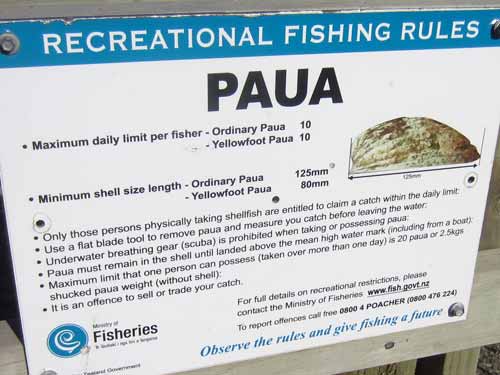
Apparently this is a good place to collect paua (abalone)...
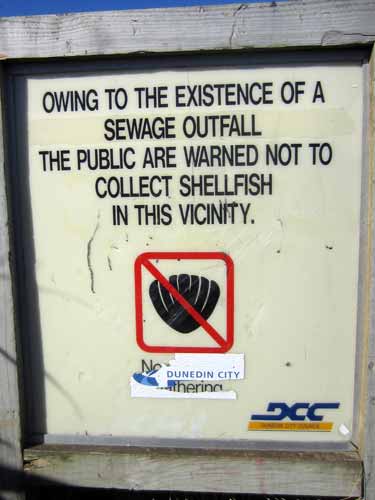
... or maybe not so much!

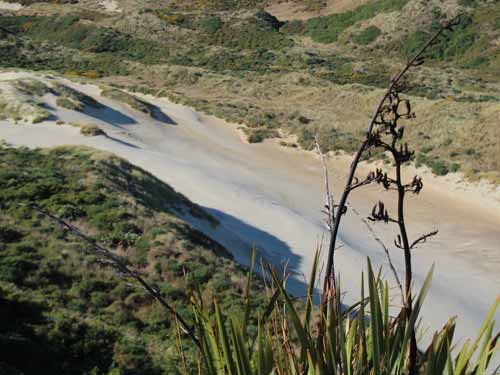
Sandymount (or Pikiwhara) is a large 'sand blow' that is actually an ancient dune that has gotten pushed against an unrelenting lava wall over thousands of years.
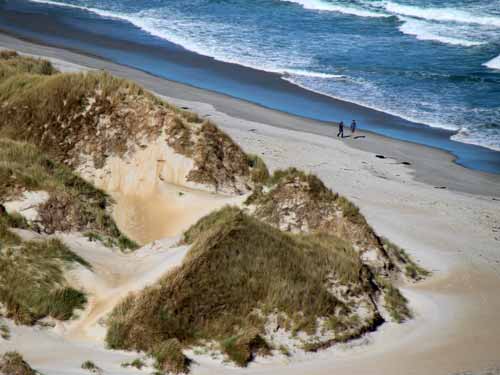
Storm waves at high tide eat away at the dunes, causing large flat areas of bare sand.
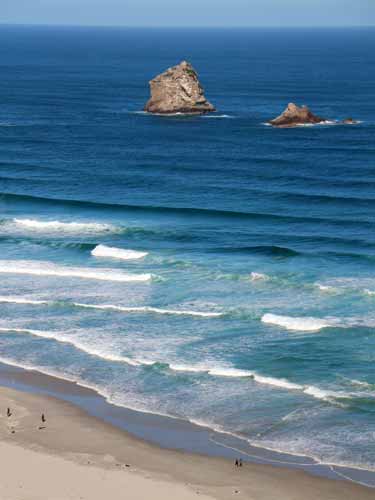
People help give some scale to the size of the waves.

Wind blew the foam right off the waves.
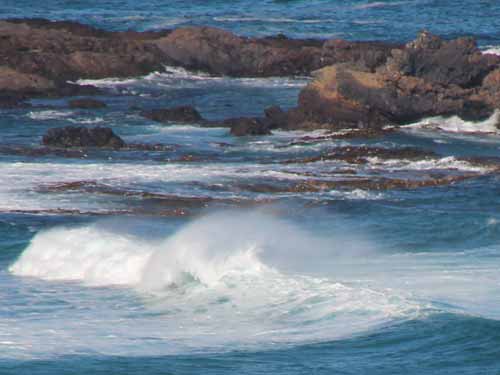
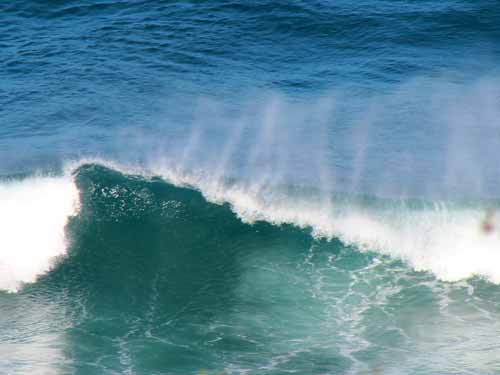
We drove away from the coast and headed inland, up Camp Road toward Larnach Castle. For many years, Brian's parents lived in a house just down the road from the castle. Unfortunately it burned down one winter after they had sold it. They had a lovely view overlooking Dunedin which they aptly named "long view". Brian told us how his parents used to share a phone line with the castle (back in the days when people had 'party lines' which were a shared service lines and you could "accidentaly" listen in on your neighbors).
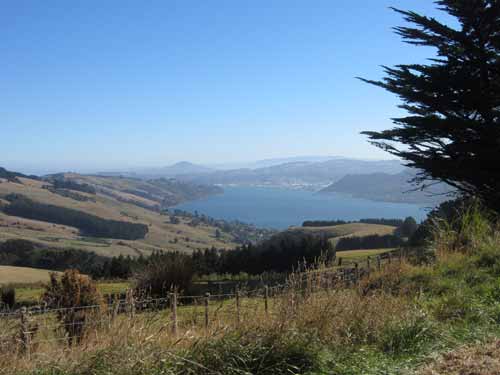
The long view
We pulled up to the entrance gate to the castle. Even though Brian and Judy didn't want a tour, they still had to pay to enter the garden. They generously paid for my entrance and castle tour as well. Photography wasn't allowed inside the castle, and words fall short of portraying it justly, but I will do my best with some short descriptions and shots from the brochure.
William James Mudie Larnach (1833 – 1898) was born in Australia and worked as a farmer and gold digger. He later got a job with a bank and became branch manager, transferring to Dunedin in 1866. He soon became quite prosperous through land speculation, farming investments and timber.
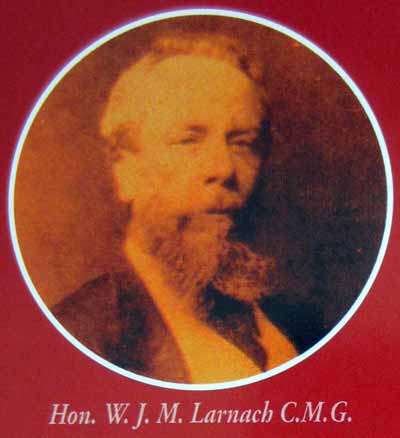
He built the castle for his first wife, Eliza Jane Guise. Construction began in 1871, and 200 workmen and three years later, the family moved in. Work on the castle continued for another 12 years, embellishing the interior with the finest materials from around the world.
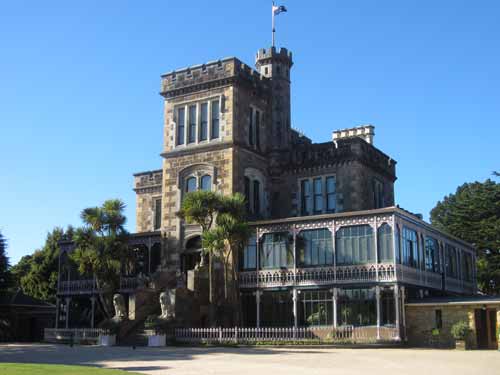
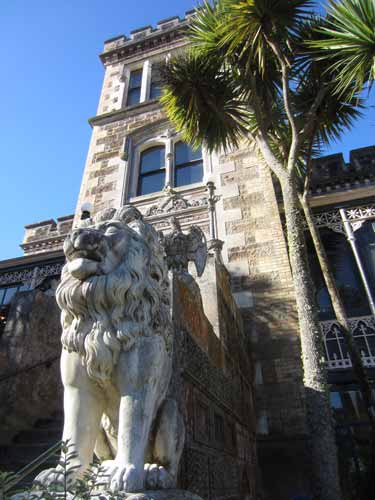
A stone lion guards the castle entrance.


Scottish wildcats with the motto "Sans Peur" (without fear) are associated with Larnach's clan.
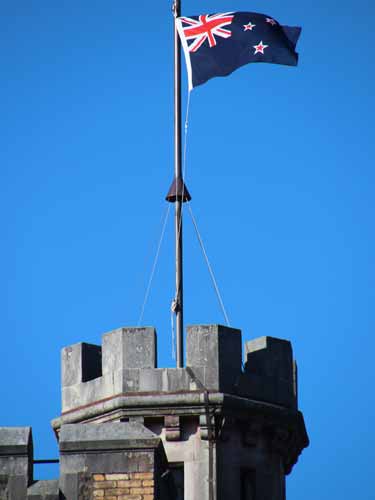
Flying high was the New Zealand flag.

In the corner is the Union Jack (the flag of the United Kingdom) while the four stars represent the constellation of the Southern Cross
Rabbits were the begin of William Larnach's downfall. They began ruining his farming investments. He tied selling his land to British investors, but this was seen as deceptive by trying to pass off inferior quality. He began to lose friends and allies. His timber company also began to decline. He lost everything but was able to save the castle by transferring ownership to Eliza. But in 1880, she passed away so he remarried her half-sister, Mary, in 1882. She, however, died in 1887, so he tried again, marrying his third wife, Constance, in 1891. In spite of many valiant attempts to rebuild his finances and his career, he hit rock bottom. After hearing a rumor that his young wife was having an affair with his favorite son, he shot himself with his revolver in 1898.
The inside of the castle was quite ornate. It had the feel of an early 1900's manor. Gorgeous wood, delicate tiles and spectacular decorations covered each room from floor to ceiling. There was lace and needlepoint, Italian marble fireplaces, etched glass, large rugs, exquisitely carved furniture from all over the world, sparkling chandeliers, bookcases filled with leather-bound books, lovely paintings, and endless things to admire.
On the main floor was the reception foyer, a music room, entertaining rooms (a drawing room for the ladies and a library for the gentlemen - each decorated with different gender-appropriate colors), as well as the dining room. The kitchen was located in the basement but had burned down and wasn't restored. A lovely spiral staircase led upstairs. On the second floor were the main bedrooms. One was set up as a display room, filled with the possessions a fine Victorian lady would own, including Constance's wedding dress. On the third floor was the baby's room and bathroom (complete with a one ton marble bathtub), as well as a tiny room for the nanny and a lovely sun room filled with plants. From here, very steep spiral stone steps led up the tower, where one got an amazing view of the peninsula.

Behind large oak doors was the main foyer, with lovely hand-etched Venetian glass.

The floor was done with mosaic and ceramic tiles from Belgium and England. "The Camp" was Larnach's name for this property.
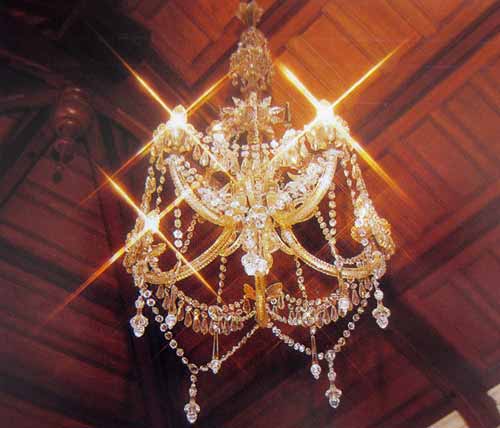
A chandelier and ornate wood ceiling
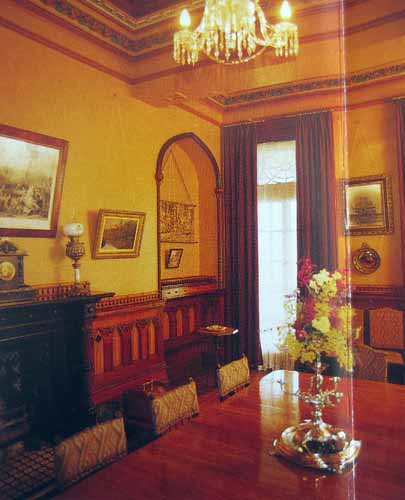
The dining room

The Georgian hanging staircase was crafted from many local and exotic woods and is the only one of its kind in the Southern hemisphere. The handrail is not steam bent but rather carved from solid kauri (a native New Zealand tree).

The master bedroom contained a large bed, also made from kauri. The thick curtains helped protect the room from the cold.
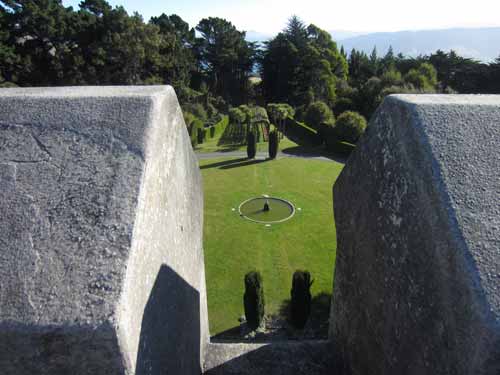
View of the front gardens from the tower
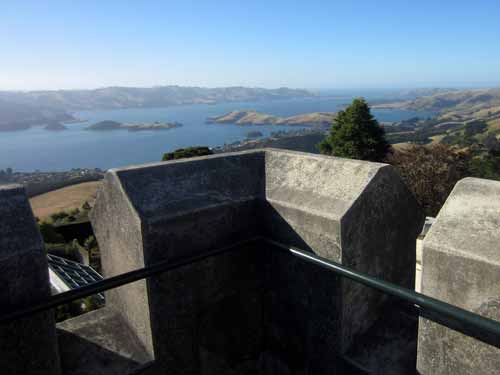
Looking down the peninsula
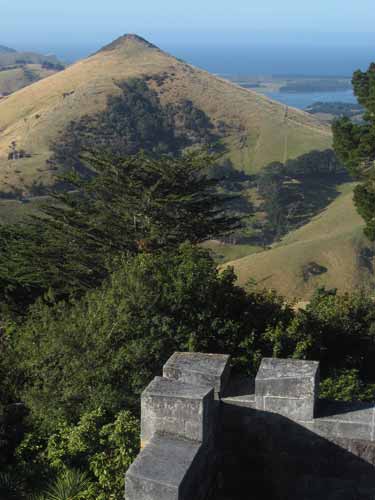
The Harbour Cone
Judy met me outside (Brian preferred to read a book in the car since they had already taken a stroll) and we walked around the gardens a bit.
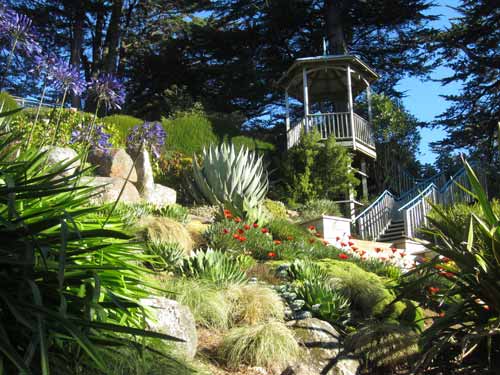
There were many succulents and gorgeous flowers.
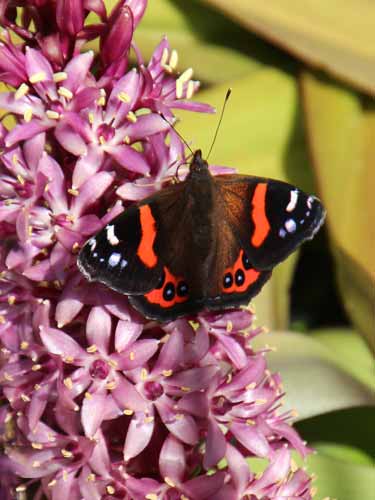
This butterfly agrees.

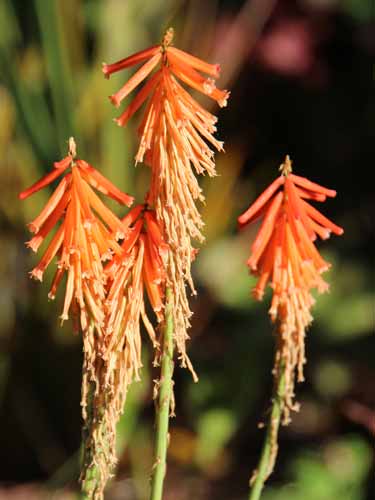


The old stables has actually been converted into accommodations...

... except for a piece of it which remains a display of its original purpose.
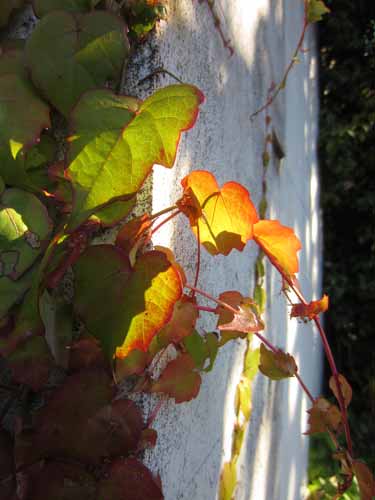
Fall creeps into the garden.

Judy said the trellis is absolutely stunning when the flower are in bloom.
We then began the drive home, passing a lovely war memorial on the way.
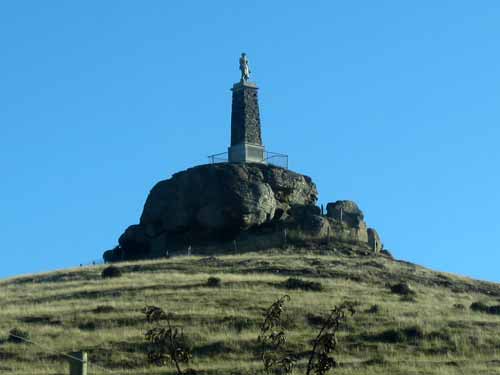
Once home, I savored a lovely Emerson's beer while Judy made a wonderful meal of ravioli. We enjoyed our meal next to the warm fire while we caught up a bit on the news on the tv. Dessert was an incredible apple crumble with whipped cream (all home-made!). I ate it all so quickly I didn't even think to take a picture of it!

This was a deliciously spiced, strong beer.
Brian and I then went to the other room to watch some sports... cricket, net ball and rugby. All of these games were completely foreign to my but I did my best to pick up at least the basic gist of the games.
In cricket, a batter stands in front of a wicket (three sticks topped with two small crosspieces called bails). He tries to hit a ball that is pitched to him. He then tries to earn runs (by running back and forth in the area between the wicket and the pitcher) but is out if the wicket is knocked over for any reason, or the ball is caught by someone in the field, or a bunch of other things. The two teams each take a turn batting and pitching.
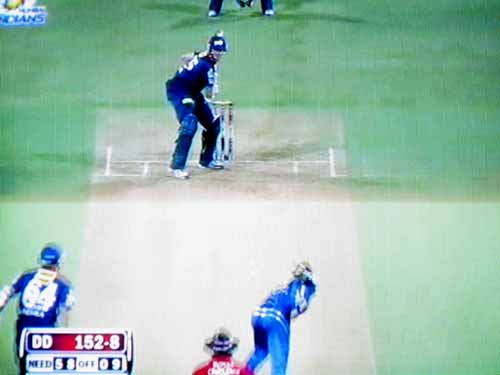
The batter (top) waits for the pitcher (bottom) to throw the ball. Note the wicket beind the batter. The brown rectangle in the green field is the 'pitch' or the area that batter has to run back and forth on.

The batter
Net ball is traditionally only a girl's sport. It is similar to basketball except the person with the ball is never allowed to run/travel with it no matter what. It can only be held and then passed. Since this is primarily played outdoors, perhaps it was designed to create less of a chance of falling while running or getting into scuffles. It's not a high contact sport.
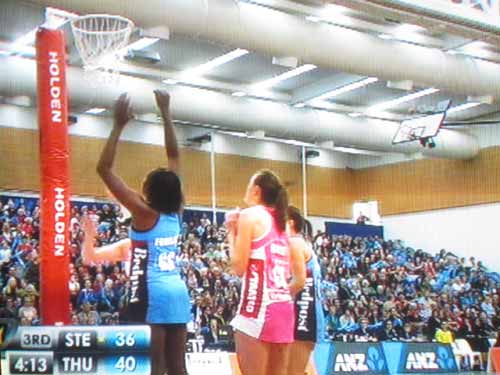
It was unusal to see this game being played indoors.
Rugby differs from American football in many ways. Two of the big differences are: the ball can only be thrown to someone behind you. This makes getting up the field quickly a bit difficult (since no long passes). Hence other strategies have to be used, such as kicking the ball a long way and having it be caught by the opposing team and then just trying to steal it back. The second is that a dog pile doesn't end the play. The guy on the bottom must release the ball as soon as he is down so that it is immediately back into play. This is where a lot of the fights happened!
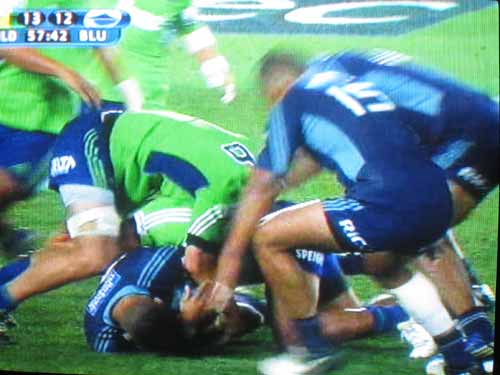
A dog pile begins! The poor guy on the bottom can literally have a dozen men jumping on him.

If the ball goes out of bounds on the sidelines, it is tossed back into play and is fair game for either side to try to take.
return • continue

